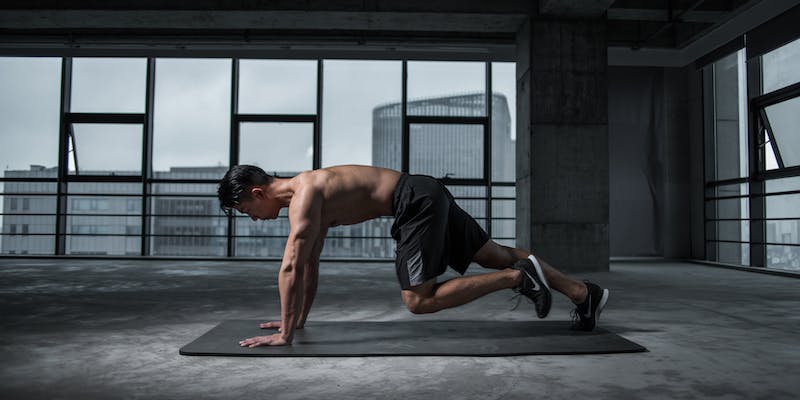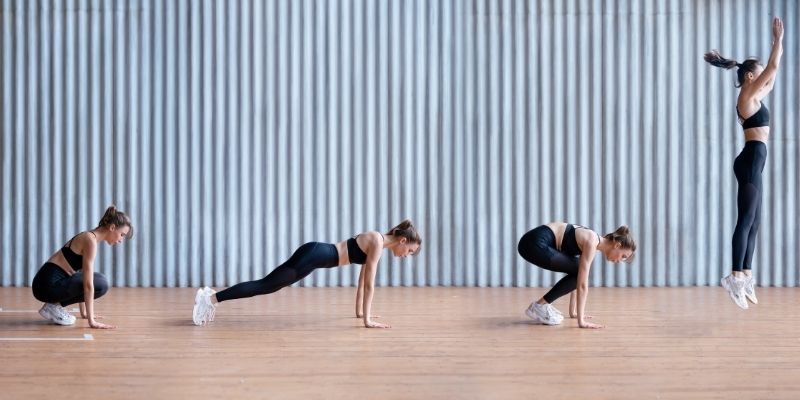The plank is one of the most common and efficient workouts for strengthening your back, shoulders, and core. However, it can be a very challenging exercise, considering that you are simply using your body weight. Strengthening your core can help you in avoiding back pain and injuries.
Some major causes for not being able to hold a plank are weak upper-body and core muscles, as well as not using your glutes and thighs. But do not worry! You can perform planks like a pro with the correct workouts and a little bit of practice. These five exercises can help you successfully strengthen your core muscles. Let's get started!
Common Reasons You Can't Hold a Plank
Why is the plank so hard to perform? This is because it's a full-body exercise that tones your lower body, back and core muscles.
Your Hips Are Sagging
It will be difficult to hold a 30-second plank if your core muscles are weak. Weak rectus abdominal and oblique muscles limit your ability to sustain the middle of your plank adequately. Your hips then droop to relieve some of the strain on your core muscles.
Nonetheless, this misaligns proper posture and overworks your lower back. However, while performing tons of crunches can help build your abdomen, it won't enhance your planking skills. The secret is to have a well-rounded fitness and strength training plan that targets specific muscle weaknesses and improves your plank holds.
You Can't Maintain Neutral Alignment
Your glutes and quadriceps are among the muscles that comprise your core, located between your shoulders and knees. To maintain your entire body in alignment while performing a plank, you must actively compress your legs and butt. Your ability to tuck your pelvis and keep your spine neutral will be hampered if your glutes and quads are unused.
This is because these muscles work in tandem to bring the pelvis into a neutral posture, which prevents your hips from dropping and helps to maintain your body's straight line from head to toe. To improve your plank form and prevent too much pressure on your back, it's important to know which muscles to activate.
Your Shoulder Blades Pop Up
You must exert more force to get yourself off the ground if your shoulder blades are winged, as compared to flat, during a plank. If that proves to be too challenging, you most likely have weak upper-body muscles and shoulders, which will make it harder for you to push.
Several muscles, such as the deltoids, pectorals, triceps, trapezius, and lats, must cooperate during a plank exercise for you to press away from the ground and keep your shoulder joint stable. Put another way, you can't learn an appropriate technique or hold a plank for very long if your upper body is weak.
Five Exercises to Help You Improve Your Plank

You can strengthen your shoulders, back, legs, and core with these five exercises to help you achieve the ideal plank.
Hollow Hold
It requires maintaining a strong core contraction while raising your arms, shoulders, and legs off the ground for a prolonged amount of time. That's why it's best suited for intermediate and experienced exercisers.
Lay flat on your back with your arms over your head and your legs straight out. Squeeze your arms in towards your head and your ankles together simultaneously. Press your back into the ground as you lift your arms and legs into a C or half-moon position. You can either stay in this posture or gently rock back and forth. Hold while maintaining a taut body posture for ten to thirty seconds. Do this three to five times.
Static Beast
Consider this a modified plank where you work on maintaining your abdominal tension. Consider bringing your knees towards your elbows and your elbows towards your knees. Your abs will sufficiently shake from this.
With your hands under your shoulders and your knees beneath your hips, begin on all fours. Raise your knees one inch above the ground. It's going to be hands and toes for you to rest on. Keep your core active to create tension, and consider drawing your hands and feet closer together. Take a ten to thirty-second break. Three to five repetitions are necessary.
T Superman
If you must change your technique, you can start by only elevating your arms and work your way up to both arms and legs. This exercise strengthens your core, upper and mid back and lower back, which will help you hold that plank.
Stretch your legs straight out while lying on your stomach. T-pose with your arms out to the sides and your thumbs facing upward. Elevate your arms, feet, and chest slowly off the ground. After holding for five seconds, return to the floor by lowering. Continue for two sets of twelve.
Single-Leg High Plank
Adding a single-leg action will prepare you for the forearm plank because the high plank is easier on your core than the backhand plank. Better trunk control can be achieved by performing the plank with one leg up.
Begin in the high plank position with your hands beneath your shoulders and your torso in a straight line from your head to your hips to your heels. Lift your right leg off the ground to be parallel to the rest of your body and at hip height. After three seconds of holding, place that foot down. Continue with your left leg. With pauses as needed, try to complete ten repetitions on each leg.
Core Stabilization Exercise with Band

Using a resistance band, you may strengthen your core stabilizers by performing this exercise, commonly known as the band Pallof press. This workout is low-impact, but it will strengthen your core.
Attach a resistance band around chest height to an anchor point. Holding the band to your chest, step back from the anchor point. As you gradually push the band away from the safe anchor point until your arms are straight, maintain a shoulder-width distance between your feet.
For 15 seconds, hold the band at its maximum extension. Don't allow your torso to spin; keep it pointed forward. Aim your shoulders and hips directly ahead. Your core will start to contract. Repeat 15 times, going back to the beginning position each time. Repeat on the opposite side after turning around.
Conclusion
In summary, mastering planks requires persistence, patience, and time. You may achieve a stronger, more flexible core and master planks by including these five exercises in your exercise routine and following the recommendations in the article. They'll help you develop the strength required for various other workouts, such as push-ups and burpees.




